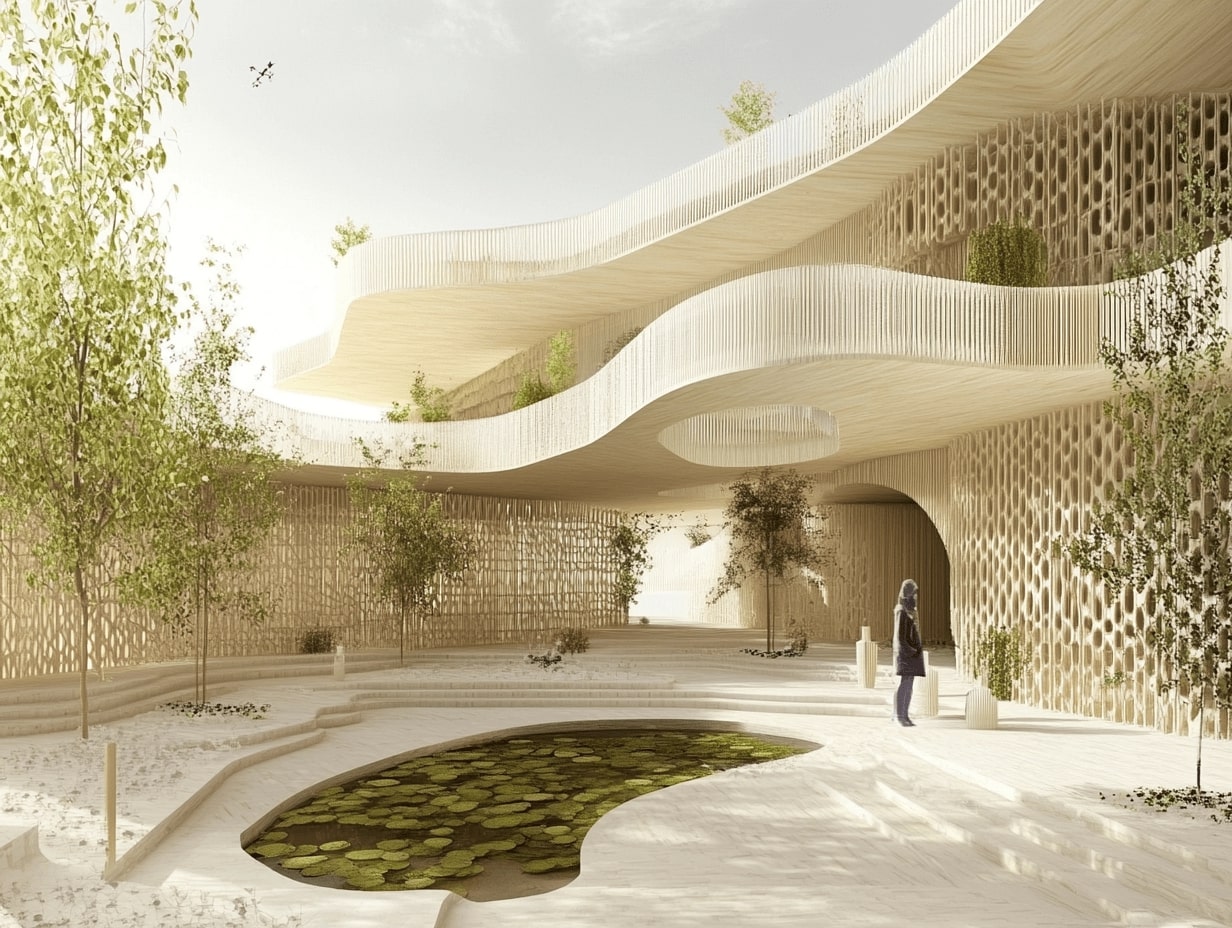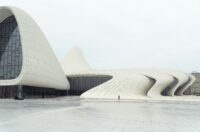- Home
- Articles
- Architectural Portfolio
- Architectral Presentation
- Inspirational Stories
- Architecture News
- Visualization
- BIM Industry
- Facade Design
- Parametric Design
- Career
- Landscape Architecture
- Construction
- Artificial Intelligence
- Sketching
- Design Softwares
- Diagrams
- Writing
- Architectural Tips
- Sustainability
- Courses
- Concept
- Technology
- History & Heritage
- Future of Architecture
- Guides & How-To
- Art & Culture
- Projects
- Interior Design
- Competitions
- Jobs
- Store
- Tools
- More
- Home
- Articles
- Architectural Portfolio
- Architectral Presentation
- Inspirational Stories
- Architecture News
- Visualization
- BIM Industry
- Facade Design
- Parametric Design
- Career
- Landscape Architecture
- Construction
- Artificial Intelligence
- Sketching
- Design Softwares
- Diagrams
- Writing
- Architectural Tips
- Sustainability
- Courses
- Concept
- Technology
- History & Heritage
- Future of Architecture
- Guides & How-To
- Art & Culture
- Projects
- Interior Design
- Competitions
- Jobs
- Store
- Tools
- More
Top Trends in Architectural Public Spaces for 2025: Sustainability, Tech & Community Focus
Explore the top architectural trends transforming public spaces in 2025, from sustainable designs and smart technologies to inclusive and adaptable features. Discover how biophilic elements, cultural art, and innovative materials are reshaping parks, plazas, and community hubs to address urban challenges, foster connections, and enhance functionality in the modern era.

Public spaces are the heartbeat of our communities, shaping how we connect, relax, and interact with the world around us. As we approach 2025, architectural design is taking bold steps to redefine these spaces, blending functionality with innovation to meet the evolving needs of urban life. From sustainable materials to tech-driven solutions, the future of public spaces is nothing short of inspiring.
We’re seeing a shift toward designs that prioritize inclusivity, adaptability, and environmental consciousness. Architects are reimagining how people experience parks, plazas, and communal areas, creating spaces that foster connection while addressing global challenges like climate change and urban density. These trends aren’t just reshaping our cities—they’re setting the stage for how we’ll live and thrive together in the years to come.
Table of Contents
ToggleOverview Of Architectural Public Spaces In 2025
Architectural public spaces in 2025 center on sustainable design, technological integration, and community-driven functionality. Designers incorporate renewable materials, green technologies, and energy-efficient systems to create spaces that minimize environmental impacts. For instance, vertical gardens and solar panel installations are common elements in modern plazas and parks.
Adaptability plays a major role, with modular structures and multi-use areas becoming standard. Spaces are designed to serve diverse purposes, such as outdoor classrooms, event venues, and leisure areas, depending on community needs. For example, urban plazas now integrate movable seating, pop-up facilities, and digital information hubs.
Digital technology fosters enhanced user interaction and management. Smart systems manage lighting, temperature, and energy usage, while augmented reality (AR) applications enrich visitor experiences by adding interactive, educational, or artistic elements. High-speed internet and charging stations support connectivity, meeting modern demands for digital inclusion.
Inclusivity remains integral, with designs catering to all age groups, abilities, and socio-economic backgrounds. Accessible pathways, sensory gardens, and culturally significant spaces promote inclusiveness and equitable access. For instance, parks now include wheelchair-friendly trails and multilingual signage.
This focus on sustainable, adaptable, tech-driven, and inclusive designs illustrates the transformative progression of public spaces toward improving urban living dynamics in 2025.

Sustainable Design Trends
Sustainable design continues to redefine architectural public spaces in 2025. Emphasizing environmental harmony, these innovations focus on creating urban areas that are eco-friendly and resource-efficient.
Green Roofs And Vertical Gardens
Green roofs and vertical gardens remain central to urban sustainability. By covering building surfaces with vegetation, they reduce heat absorption, improve air quality, and support biodiversity. For example, public squares now feature living walls that filter pollutants while enhancing aesthetic appeal. Roof gardens on cultural centers provide community gathering spaces and increase rainwater retention, reducing runoff in urban areas.
Energy-Efficient Materials
Energy-efficient materials dominate modern public space construction. Architects use recycled steel, low-emissivity glass, and insulating concrete forms to minimize energy waste. For instance, low-emissivity glass blocks harmful UV rays while maintaining indoor temperatures, cutting energy consumption. Pervious concrete in parks improves stormwater drainage, preventing flooding without sacrificing durability. These materials optimize efficiency and address environmental challenges in growing urban spaces.
Technology Integration In Public Spaces
Advancements in technology are revolutionizing how public spaces function and interact with communities. Cutting-edge systems are enhancing connectivity, user engagement, and operational efficiency in urban environments.
Smart Infrastructure And IoT
Smart infrastructure leverages IoT devices to optimize public space management. Sensors monitor air quality, noise levels, and foot traffic to provide real-time data for better decision-making. Lighting systems equipped with motion sensors reduce energy consumption during off-peak hours. Smart benches, featuring device charging and Wi-Fi access, improve convenience for visitors. Waste management uses IoT-enabled bins that notify authorities when they’re full, enhancing cleanliness and operational efficiency.
In transportation hubs, IoT streamlines mobility with apps providing live updates on parking availability, public transport, and crowd density. These integrations create safer, more efficient environments.
Augmented Reality For Public Interaction
Augmented reality (AR) enriches public space experiences by overlaying digital content on physical environments. AR wayfinding applications guide visitors in large parks or complex urban plazas, simplifying navigation. Interactive exhibits in cultural centers use AR to display historical or environmental information, engaging diverse audiences.
Gamified elements encourage user participation, such as virtual treasure hunts linked to public art installations. Events in public spaces also benefit, with AR enhancing concerts or festivals through immersive visuals. By blending the physical and digital, AR fosters meaningful engagement and enriches user experiences.

Focus On Community And Inclusivity
Public spaces in 2025 emphasize fostering stronger community ties and creating inclusive environments. These trends reflect a commitment to meeting the needs of diverse populations while encouraging shared experiences.
Adaptive Spaces For Diverse Needs
Architectural designs now prioritize adaptability to serve various community activities. Flexible spaces like transformable plazas and modular seating arrangements accommodate events, interactive workshops, and quiet retreats. Multi-use areas are integrated into urban environments to cater to families, professionals, and recreational users. For example, plazas may double as farmers’ markets or festival grounds depending on the time and demand.
Innovative design tools, such as movable partitions and retractable roofs, enhance functionality, allowing rapid customization to suit specific requirements. These spaces often feature eco-friendly, durable materials, ensuring longevity while reflecting local culture and character.
Prioritizing Accessibility And Equality
Inclusive design addresses physical accessibility and social equity. Wide, step-free pathways, tactile surfaces, and intuitive signage ensure usability for individuals with varying mobility levels and sensory needs. Public areas now provide features like accessible playgrounds, adaptive seating options, and gender-inclusive restrooms.
Designers integrate cultural elements to celebrate diversity, creating spaces where people of different backgrounds connect. Amphitheaters and community halls often host multilingual events, contributing to a sense of belonging. This intentional design approach ensures everyone feels valued and represented, fostering unity across urban landscapes.

Biophilic Design And Nature-Inspired Spaces
Public spaces in 2025 are increasingly reflecting biophilic principles, blending the built environment with nature to promote well-being and sustainability. Incorporating natural elements and enhancing biodiversity are key strategies shaping these spaces.
Enhancing Urban Biodiversity
Designing for biodiversity transforms public spaces into ecological hubs amidst urban landscapes. Features like native plant gardens, green corridors, and pollinator-friendly habitats create thriving ecosystems. Roof gardens on transit hubs, for example, attract bird species, while bee-friendly plants in park spaces support pollination networks. By integrating living ecosystems, public spaces contribute to cleaner air, enhanced aesthetics, and climate resilience.
Urban parks and plazas are now incorporating vertical gardens and green walls with native vegetation to restore fragmented habitats. Spaces designed with diverse flora offer color, texture, and seasonal variability while reducing urban heat through natural shade. These designs also encourage community participation through urban farming and educational workshops centered on conservation efforts.
Incorporating Water Features And Natural Elements
Water features are central to biophilic designs, linking natural beauty with practical functions. Interactive fountains and reflective pools in plazas enhance sensory experiences, creating tranquility in busy areas. Stormwater management systems integrated into designs, like rain gardens and bioswales, mitigate flooding and replenish groundwater. Projects such as riverfront promenades pair water elements with walkable, green-lined paths to promote recreation and environmental awareness.
Natural materials reinforce the theme, replacing synthetic options in pathways, benches, and structures. Wood, stone, and sustainable bamboo enhance the tactile and visual connection to nature. This alignment with natural elements transforms public spaces into immersive environments, fostering ecological mindfulness while addressing urban challenges.

Artistic And Cultural Incorporation
Artistic and cultural elements are redefining public spaces, creating vibrant environments that connect communities while reflecting shared identities. Embracing creativity in these designs enriches user experiences and strengthens cultural engagement.
Public Art Installations
Art installations in public spaces enhance aesthetic appeal and foster community pride., interactive displays, and digital projections are increasingly integrated into parks and plazas. For example, kinetic sculptures powered by renewable energy offer both visual intrigue and functional sustainability. Murals featuring local artists celebrate cultural narratives, engaging residents and visitors alike. By incorporating temporary installations, including pop-up art exhibits, public spaces remain dynamic and continuously evolving.
Spaces For Performances And Gatherings
Modern public spaces prioritize areas for cultural performances and social gatherings, supporting community connection and shared experiences. Amphitheaters, open-air stages, and flexible gathering zones are designed with acoustics and visibility in mind. Multi-use designs accommodate concerts, theater, and public speeches, ensuring year-round versatility. For example, plazas with retractable enclosures adapt seamlessly to seasonal needs. Integrating advanced lighting and sound systems enhances usability, while shaded seating and green landscaping promote comfort and inclusivity. Increased focus on these spaces fosters cultural unity and diverse engagement.
Conclusion
Architectural public spaces for 2025 reflect a forward-thinking approach that balances sustainability, technology, and community engagement. By embracing green technologies like vertical gardens, smart infrastructure, and energy-efficient materials, these spaces align with environmental goals while enhancing urban functionality. Inclusivity and adaptability ensure diverse cultural representation and accessibility, creating spaces that serve evolving community needs. Artistic elements and biophilic designs further humanize these environments, fostering well-being and cultural connection. These trends collectively transform public areas into dynamic, multifunctional hubs embodying the priorities of modern urban living.
- architectural public spaces
- biophilic design 2025
- community engagement architecture
- community-focused architecture
- digital technology in architecture
- eco-friendly public spaces
- environmentally conscious design
- future of public spaces
- green architecture trends
- innovative public space ideas
- public space design trends
- Smart City Architecture
- sustainable architecture 2025
- sustainable urban design
- tech in public spaces
- tech innovations in architecture
- trends in public architecture
- urban renewal architecture
Submit your architectural projects
Follow these steps for submission your project. Submission FormLatest Posts
Enhancing Urban Life: Best Practices for the Design of Walkways in Urban Areas
Discover the transformative role of urban walkway design in creating safer, sustainable,...
Playgrounds: Landscape Architecture for Inviting Interaction
Playgrounds in landscape architecture are more than spaces for activity—they are environments...
Future Trends in Urban Development: Embracing Sustainability and Smart Technology
Explore the future of urban development in this insightful article that highlights...
Understanding Having an Architectural Perception in Public Spaces for Better Community Engagement
Explore the transformative power of architectural perception in public spaces. This article...












Leave a comment